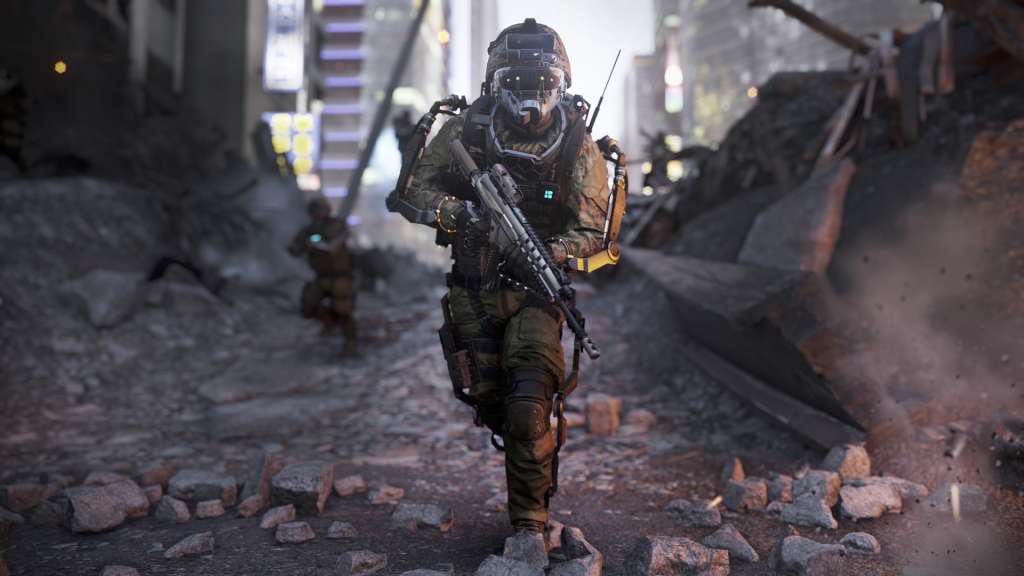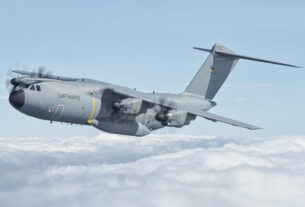Exoskeleton may change next warfare rules
As the militaries all over the world are willing to take less risks, the use of exoskeleton is getting popular and may play a key role in future warfare.
Exoskeletons may enable infantry war fighters break down doors and fight at close quarters, load and unload cargo from vehicles, maintain land vehicles and aircraft, dig trenches and other prepared fighting positions, carry wounded comrades, and move hundred-pound obstructions to rescue others.
The US Army scientists are reaching out to industry for new ways to relieve infantry war fighters of heavy loads with load-bearing robotic suits called exoskeletons.
Exoskeletons are considered a promising approach to enable war fighters to maintain peak performance for longer than they can today.
These exoskeletons are designed to improve strength, endurance, and ergonomics while maintaining user safety and reducing physical injury risk during various load tasks.
Currently, the US Army is asking for industry white papers that outline innovative exoskeleton approaches to improve war fighter performance while they are moving over uneven terrain, or performing ergonomically challenging load tasks for long periods in awkward postures, doing heavy lifting, or other repetitive lifting.
Effective exoskeleton systems demonstrate the principles of user safety, comfort, ease of use, integration with user clothing and individual mission equipment, energy efficiency to enable long operating durations and low system costs.
The intense computing power new components and technologies provide make real-time deep learning applications possible. See how SWaP-optimized high-performance embedded computing (HPEC) platforms are enablers of realistically deployable deep learning defense applications.
The US Army experts expect they will need a variety of exoskeleton systems for infantry warfighters, logistics and mission support, for ergonomically challenging tasks, medium and heavy lift and carry, and specialized tasks like explosive ordnance disposal and chemical and biological protection.
Exoskeletons for infantry war fighters would facilitate running and walking for long periods, and help war fighters to shoot, move, communicate, protect, and sustain.
Logistics and mission support exoskeletons would focus on strength-enhancing or injury-reducing low- or medium-mobility capabilities during lifting, loading, unloading, and transporting tasks.
Light-task and medium-lift-and-carry exoskeletons would help warfighters with ergonomically challenging tasks, and make lifting tasks safer and more effective.
Heavy-lift-and carry exoskeletons would enable one person to perform load handling tasks that one or more people normally handle. This could serve as a force multiplier, creating a smaller force with greater capabilities.
Specifically, Army researchers are looking for exoskeletons that could enable an infantry war fighter to march with loads of 99 to 136 pounds safely and without excessive exhaustion; and walk in a crouch, crawl or jump obstacles while carrying loads of 75 to 90 pounds.
Both were full body suits for solider mobility augmentation. Both projects captivated the public’s imagination. But with each article and newscast the capabilities and success of the two exos were becoming more and more exaggerated.
So it came with a great shock when the US Military stopped expressing interest in both projects. In just a few months, it seemed that exoskeleton technology had gone from seemingly being months away from full deployment in the military to something useless and not worth pursuing.
The downfall of the first military exoskeletons was their size and power consumption. Since both the HULC and the XOS were full body suits, they had large metal frames and multiple actuators. Measuring and characterizing what all of these individual actuators actually did for a soldier was hard enough, but powering them proved impossible.
The XOS project has emphasized on the development of the motors and control system first, with the idea that battery technology will catch up.
The XOS 2 was a tethered exoskeleton that needed to be connected to a power source at all times. When it became clear that no batteries are capable of powering the suit for a long time, the development was cancelled.
The HULC project ran into similar power supply issues as the XOS but the Ekso Bionics and Lockheed Martin teams fought very hard to make it work.
The HULC was redesigned repeatedly to consume less power. At one point, a small gas powered engine was brought in. But as Boston Dynamics has now found out, the US Military did not appreciate the idea of a loud high pitch engine announcing the position of its troops.
Eventually, the HULC was able to move under its own power for several hours and it demonstrated reduced metabolic cost for the soldiers wearing it but the project ran into a new obstacle. The US Military increased the number of hours the HULC should be able to operate without recharging.
The project then ran into an infinite loop, to increase the battery life a heavier battery was required, which then required more power to the suit which then required a larger battery and so on.
While the HULC was not successful, a stripped down version with no motors and electronics called the iHAS became one of the first passive exoskeletons to show promise for use at work and industry.
The iHAS morphed into the Mantis which eventually inspired the Ekso Works and FORTIS passive exoskeletons. Sarcos separated from Raytheon but it is still an active company and is surely working on something interesting.
Over the years, military exoskeletons have evolved into smaller, lighter and more specialized devices. For comparison, some of the initial versions of the HULC weighed 53 lb. (24 kg) compared to 11 lb. (5 kg) for many of the new military exos.
Military exoskeletons face many of the same challenges as their industrial counterparts: being comfortable to wear for many hours and integration with already established equipment and standards. Military exoskeletons have to work with what is already accepted military equipment.
For example, if an infantry armored vest interferes with the fit of a military exoskeleton, the exoskeleton has to go. Military exoskeletons have to be universal, yet comfortable and fully integrated with the soldier while not getting in the way of weapons or the ability to take cover.
This is why many of the latest military exoskeletons have their motors and actuators at the front or the back of the user. This is in sharp contrast to the vast majority of exoskeletons that have the bulk of the device at the hips or the side of the legs.
Furthermore, the exoskeletons have to be reliable and very durable. If a paratrooper needs to jump off a plane, parachute into a lake, crawl through mud and then run for cover to engage the enemy that exoskeleton has to work and not become a liability.
There is a real opportunity for the adoption of exoskeletons in the military. As a rule of thumb, the more equipment a soldier has to wear, the less distance they can cover in a day.
In terms of safety, the distance a military unit is expected to cover is inversely proportional to how much armor the soldiers can wear. An exoskeleton that can demonstrate a reduction of the metabolic cost of a loaded with equipment infantry can translate to soldiers that can cover more ground, have more supplies, become more independent and have additional armor.
All military exoskeletons with the notable exception of the Mojo series by 20KTS+ aim to reduce the metabolic cost of a soldier in one way or another.
The exoskeleton may apply direct power assistance to the soldier while walking, attempt to transfer some of the equipment weight into the ground or reduce the weight of batteries by recharging smaller ones. The major exception to this rule are the Terra Mojo and Marine Mojo by 20KTS+ which reduce the vibrations on standing soldiers while on small boats or vehicles.
Just like the other three exoskeleton subfields (medical, work/industry, consumer/civilian) the military exoskeletons can be divided into categories based on function.
These are wearable robots that cover the legs and the arms. Outside of science fiction (movies, books and computer games) there have been few actual prototypes in development. All full body suits share the same weaknesses as the HULC and XOS 2.
They are large, have too many actuators and are difficult to power and control. As a result, many later full body projects have been split in half into separate or modular lower body and upper body wearable robots.
Lower extremities (or just leg) exoskeletons provide assistance to the legs. If the wearable extends all the way down to the ground, it can also be used to transfer loads.
Because a military exoskeleton always has to be flexible and compliant, the amount of load that it can carry while still moving quickly will always be limited. These devices can also be classical with a hard metal frame or be made entirely out of soft materials.
This allows for powered leg exoskeletons to be merged into one category based on their main purpose: provide mobility assist and decrease the metabolic cost of movement (a soldier that carriers the weight of their gear and the exoskeleton should expend less energy than carrying just the gear).
Passive exoskeletons do not have any actuators, batteries or electronics. Two good examples of what a passive exoskeleton can do for a military are the Marine Mojo and DSTO Operations Exoskeleton. The Marine Mojo by 20KTS+ is designed to absorb shock and vibrations for military personal on small, fast patrol boats. It is a small light dampener system.
The Operations Exoskeleton by the Australian Government Department of Defense Science and Technology (DSTO) is a system of Bowden cables designed to transfer a percentage of the weight of a soldier’s heavy backpack directly into the ground.
Energy scavenging exoskeletons purposely hinder the soldier in an attempt to collect energy. The collected energy can be turned into electricity to recharge a battery or directly power a device (such as a communication device).
Some lower body exoskeletons supposedly can be turned from assistive to energy collective, but that will make them permanently heavier. For an idea of what a rough prototype of an energy collecting knee exoskeleton looks like refer to this article: Exoskeletons Extracting Energy For the User.
Usually energy extraction from walking happens at the heel. A compliant element is compressed at heel strike providing a small amount of energy.
Historically, energy extraction devices end up producing less energy than the cost of wearing them. The best example of a scavenging military exoskeleton is the PowerWalk by Bionic Power. In May of 2016 the company acquired an additional contract for $1.25 million for initial low volume production of the PowerWalk for the US Army.
Tandem NSI had a phenomenal article that explains the interest behind energy scavenging military exoskeletons. If we assume that a deployment is 72 hours (3 days), then a soldier needs to have enough electricity to power all of their devices for that entire period.
Currently, this comes to 17 pounds of batteries. A device that can carry those 17 pounds (such as a leg exoskeleton) is one way to address the issue.
Another method would be to reduce the weight of the batteries by replacing them with a smaller rechargeable that is continuously charged by the exoskeleton during the 72 hour period.
If the metabolic cost of the rechargeable device weight and hinderance is smaller than the metabolic cost of carrying non-rechargeable batteries the device will be a success.




